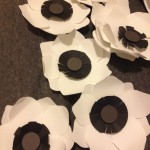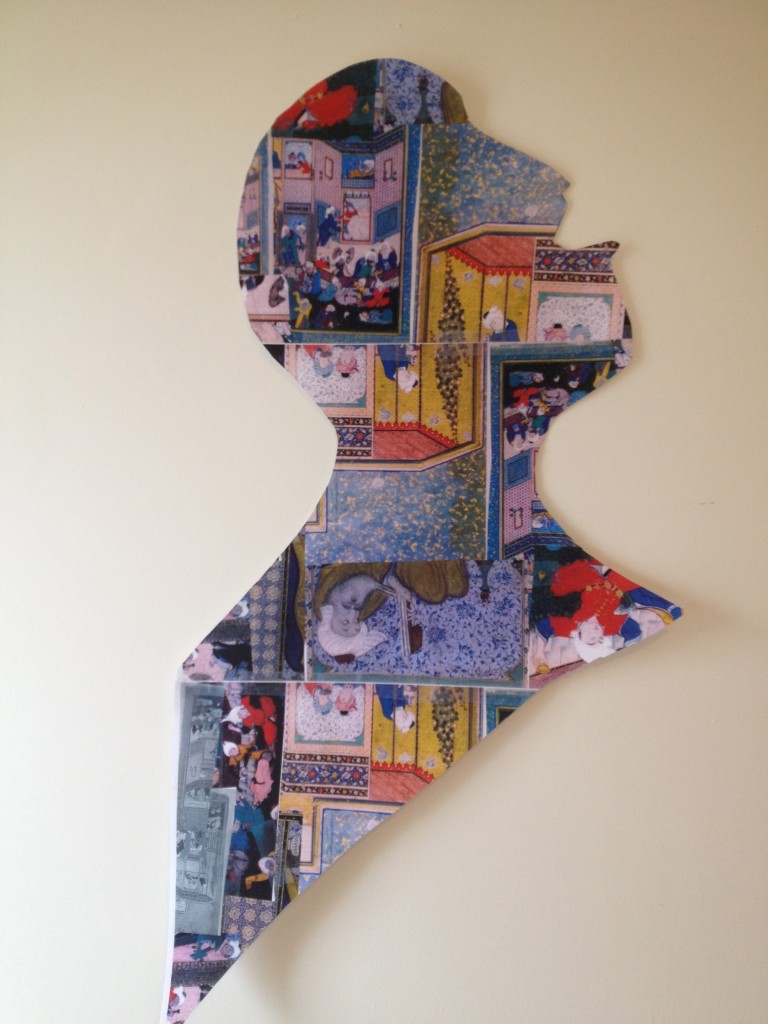Calligraphy Blooming
Posted in Uncategorized on March 24th, 2014Calligraphy has been described as “the art of the linear graphic; it restructures one’s visualization of a language and its topography.” (6) Abedelkebir Khatibi and Mohammed Sijelmassi in their article on the Splendor of Islamic Calligraphy, also note that “calligraphy reveals the plastic scenography of a text: that of a letter turned into image, caught in the physical act of creating a line which is animated and led onwards by an inner rhythm. This art works by taking a text as a score consisting of strokes created by the graphic artist.” (6)
Calligraphy is described here not only as a form that restructures visualization of a language, but as a art form that has a rhythm and that is in motion as it creates a image from a letter. In order to both show the motion of calligraphy as well as the unfurling of beauty, this piece uses paper flowers to illustrate both motion and a motion of unfurling beauty.
Each magnolia has written on it a piece from the Qur’an, because of my own lack of skill to truly create the “art” of calligraphy, the verse is written on a flower. These flowers hang free form moved by wind or air, but ideally not losing their form or shape, to demonstrate beauty in motion, and a shifting and changing of verse to art. After reading the article on the Splendor of Islamic Calligraphy, one gets a sense of how calligraphy is not just a “beautification” of the text of the Qur’an, but an attempt to unveil the divine in the Qur’an, a way in which to create art and beauty that is in motion as the Qur’an, as a revealed text.
This piece gives the text a physical motion that not only is represented in the mobility of the strung up flowers, but also in their motion of possibility as they give the idea that they could unfurl more, the possibility that they might bloom. Here, the flowers represent the beauty and mobility of the calligraphy instead of giving the text the beauty and flow of calligraphic design, I have given it flowers.







